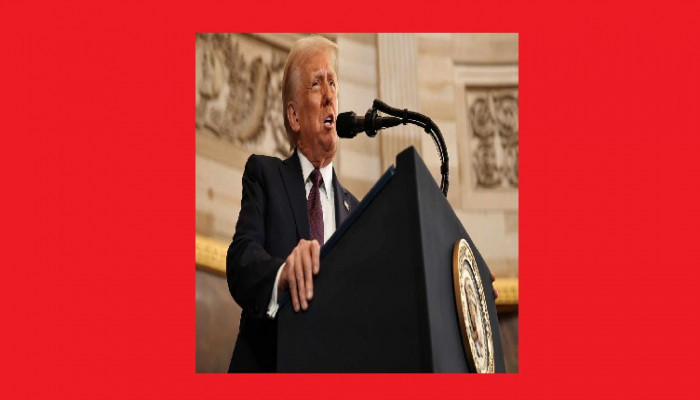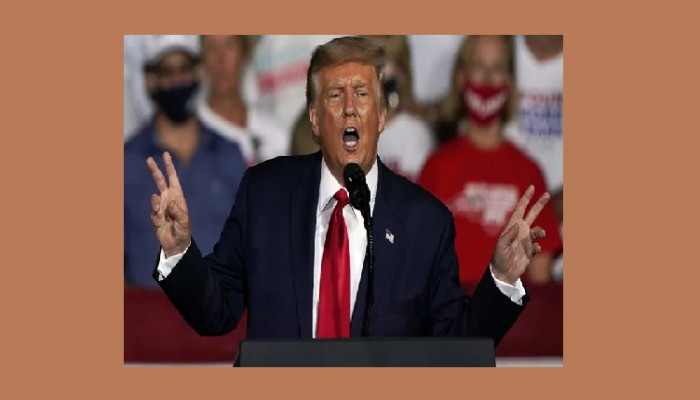- Jun 02, 2025
- Khushi Mishra & Dr. A. Adityanjee
Featured Articles
End of Pax Americana: An International Perspective
For much of the 20th and early 21st centuries, the international order operated under the broad shadow of Pax Americana—a term that implied not just military supremacy, but the cultural, economic and institutional dominance of the United States. From shaping the post-WWII Bretton Woods institutions to setting the terms of global diplomacy, America attempted to fashion a world order in its image with some success. However, today, that benign shadow of all-pervasive Uncle Sam is receding. Not with a dramatic collapse but through slow erosion—an unravelling marked by shifting power centres, declining institutional legitimacy, and ideological fragmentation. The end of Pax Americana is not a future possibility but a present condition, albeit starting with a slow decline. And its consequences stretch far beyond the U.S., rippling across continents, alliances, and geopolitical imaginations. Cracks in the Foundation The U.S. was not just a superpower but the architect of a system that promised liberal democracy, free markets and so-called rules-based multilateralism. After the break-up of the former Soviet Union, it became the sole hyperpower in the nineties. However, cracks began to show long before the term "American decline" entered the mainstream. The unnecessary war in Iraq and the prolonged occupation and nation-building in Afghanistan revealed the limits of hard power. The 2008 financial and banking crisis exposed vulnerabilities in the very model America exported. Domestically, political dysfunction and extreme political polarisation and racial strife eroded the internal coherence necessary to sustain global leadership. The Trump administration 1.0 did not invent this decline—it merely amplified it. Unilateral withdrawals, erratic diplomacy, and an “America First” posture ruptured long-standing alliances and triggered a recalibration among both adversaries and allies. Trust, once the bedrock of American hegemony, began to fade. Doubts about the cognitive competence of a series of US presidents have contributed to the lack of confidence in the US decision-making at the highest level. Trump 2.0 administration’s MAGA (Make America Great Again) policies are contributing to the pervasive lack of faith in US decision-making process by the international community and the comity of civilised nations. Multipolar Drift and the Return of Strategic Autonomy As the U.S. retreats from the centre, other players have moved in—not to replicate American leadership but to reconfigure the playing field altogether. China’s rise is not simply about GDP or military capacity but about narrative control. Beijing offers an alternative to Western liberalism—development without democracy and influence without direct intervention. However, China’s debt trap BRI scheme and wolf warrior diplomacy have not gained it any new friends. The US has tried to face the economic challenge from rising China by de-risking and decoupling its economy and has instituted near-shoring, friendshoring and onshoring. Despite economic constraints, Russia has strategically asserted itself through information warfare, military entrenchments and diplomatic offensives. Meanwhile, middle powers and regional powers like India, Brazil, Türkiye, European Union, Saudi Arabia, Iran and South Africa are asserting strategic autonomy. No longer content with junior-partner status, they are reshaping regional alliances, experimenting with new institutional arrangements, and occasionally resisting U.S. pressure outright. In this emerging order, power is no longer unipolar or bipolar or even cleanly multipolar—it is diffused, competitive and unpredictable. We are heading towards an era of nascent oligo-polarity Europe and the Limits of Transatlantic Dependence In Europe, the end of Pax Americana feels less like liberation and more like abandonment. The postwar European project was built on the twin foundations of American security and economic partnership. As U.S. foreign policy became more transactional, Europe began grappling with an uncomfortable reality: the transatlantic safety net may no longer hold. Calls for “strategic autonomy” are gaining momentum, particularly in France and Germany. From digital sovereignty to independent defence capabilities, the EU is slowly inching towards a more self-reliant posture. However, internal divisions and bureaucratic inertia make this transformation uneven and uncertain. Europe, once a pillar of Pax Americana, is now navigating its future in a more volatile world. Voices from the Global South In the Global South, reactions to the unravelling of American primacy are more complex. For many, the liberal international order was less about freedom and more about hierarchy. Structural adjustment programs, conditional aid, and numerous but selective military interventions without UN Security Council approval left deep scars. Yet, the same U.S.-led rules-based order also enabled global development financing, diplomatic recognition and conflict resolution mechanisms. As U.S. influence wanes, new opportunities and new risks emerge. China’s infrastructure-first developmental model through the Belt and Road Initiative offers an alternative, but it comes with its own dependencies and debt trap schemes. A previous version of the BRI project was named One Belt, One Road (OBOR), an acronym that was lampooned as ODOR (One Debt, One Road). China’s maritime claims against the exclusive economic zones of several ASEAN countries and its refusal to comply with the international tribunal verdict of 2016 does not inspire any confidence about its benign intentions as a rising superpower. Russia’s engagement, often transactional, fills security vacuums but seldom addresses long-term governance needs. The Global South is not passively watching this transition—it is actively negotiating, leveraging and resisting in ways that challenge old hierarchies. What Happens When the Centre No Longer Holds? The end of Pax Americana does not signal a complete collapse of the global order. There is an ongoing Cold War 2.0 between the reigning hegemon and the rising hegemon without a complete binary division of the comity of nations. Global South is hedging and not willing to take sides in this new Cold War 2.0. Whether these two competing nations will fall into Thucydides' trap is yet to be seen. We are witnessing the slow emergence of a multiplex world—a complex, culturally diverse, and normatively contested international system. In such a world, no single actor sets the rules. Power is negotiated, legitimacy is localised, and the global order is constantly in flux. Burgeoning US debt to the tune of $38 trillion also questions the stability of the post-World War II financial system. Several countries are selling the US Government treasury bonds and buying gold for fiscal stability. Financial transactions are no longer based on the supremacy and hegemony of the US dollars. Many countries are doing bilateral trade using regional and local currencies, bypassing the dollar. China has encouraged the use of the Yuan or Renminbi for international trade since the 2008 banking crisis in the US. China’s own economy is facing headwinds, with the housing sector insolvent and high unemployment among college graduates. The debt-to-GDP ratio for China is currently 300%. China’s attempts to browbeat Japan and other countries by leveraging its monopoly of rare earth and mineral supply chains have not endeared it to the rest of the world. De-dollarisation is not imminent. It is a slow and steady process, but it will not be replaced by Yuanization. Despite talks of a future BRICS currency, there aren’t many takers for it in the BRICS-plus grouping, barring China. This transition is not without danger. Without a stable hegemon, flashpoints can become firestorms. Institutions built for a different era may prove inadequate in managing 21st-century crises—from pandemics and cyber wars to climate change and artificial intelligence. At the same time, this flux creates possibilities for reimagining global governance beyond Western templates. It invites pluralism, regionalism and new solidarities. Conclusion Pax Americana was always as much a myth as it was a reality—one held together by narratives of exceptionalism and promises of liberal peace. That myth is now unravelling, not because America has disappeared, but because the world has changed irreversibly. The erosion of U.S. primacy is not merely a geopolitical event; it is a civilisational moment. It challenges us to rethink power without hegemony, order without uniformity, and progress without domination. No country in the world, however, wants the replacement of Pax Americana with Pax Sinica. China’s lack of transparency and failure to acknowledge its role in the lab-created Wuhan virus pandemic have made the world suspicious of China’s intentions. This is not the end of international cooperation, but it may be the end of a very aggressive and one-size-fits-all globalisation. As the world turns into a multipolar mosaic, the future lies not in nostalgia for the lost primacy of an American melting pot, but in constructing new frameworks—messy, plural, negotiated, and perhaps more just. The decline of Pax Americana might just be the invitation the world needed to imagine and create something better, based indeed on a genuinely rules-based order and not exceptionalism. References Acharya, A. (2017). The End of American World Order. Polity Press. Acharya, A. (2021). “Afghanistan and the End of American Primacy.” Foreign Affairs. Fukuyama, F. (2012). The Future of History: Can Liberal Democracy Survive the Decline of the Middle Class? Foreign Affairs. Haass, R. N. (2008). The Age of Nonpolarity. Foreign Affairs, 87(3), 44–56. Ikenberry, G. J. (2011). Liberal Leviathan: The Origins, Crisis, and Transformation of the American World Order. Princeton University Press. Krauthammer, C. (1990). “The Unipolar Moment.” Foreign Affairs, 70(1), 23–33. Leonard, M. (2020). “The Revenge of Sovereignty.” European Council on Foreign Relations.- May 29, 2025
- Viren S Doshi












